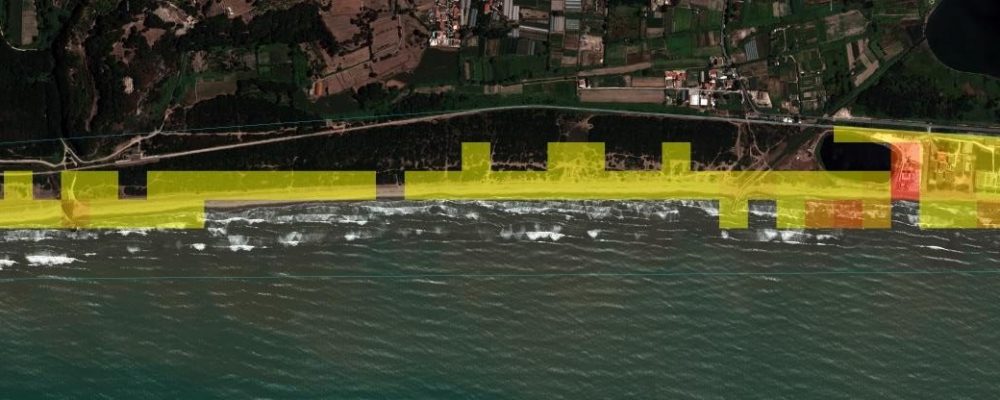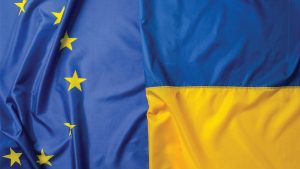Highly Automated Beach Litter Detection
- European Space Imaging
- 20 February, 2019
Tama Group is using machine learning along with Very High Resolution 30 cm satellite imagery supplied by European Space Imaging to create a highly automated system for detecting beach litter along the Italian coast.
Traditionally it has been a human user who analyzes satellite imagery for changes, but this process is slow, time-consuming, and can result in devastating delays during time-sensitive situations such as natural disasters. Whether detecting trash on beaches or monitoring forest health, there is huge potential for computers, through the use of machine learning, to do the job faster and better than humans. When set to the task of analyzing the petabytes of data generated by satellites they will unlock a revolutionary ability for global change to be monitored remotely and regularly. There is no doubt that this technology is quickly on the way, but a question remains about the scale of the changes that are detectable using Very High Resolution 30 cm satellite imagery.
Ralph was involved in some European Commission research that monitored sea pollution using cameras mounted on ships, and it led him to wonder if he could find a good way to monitor litter on beaches. He set his sights on one of Europe’s most polluted beaches: Lido di Licola Mare, just north of Naples, Italy. He considered mounting cameras on the beach but decided they would require too much maintenance.
“For permanent monitoring systems you have to be smart about the sensor,” he said. “Drones might have been an option but we figured no, it’s too expensive, if we really bring this service to market it should be satellite-based. The capability of satellites to have a permanent monitoring focus is certainly ideal.”
European Space Imaging was able to supply 30 cm Very High Resolution WorldView-3 imagery for a proof-of-concept study straight from its archive. A single pixel in a 30 cm satellite image will depict 30×30 cm of whatever was on the ground when the image was taken. This means a beach towel is big enough to be seen clearly by the naked eye, but a child’s bucket and spade on the sand is probably not – except perhaps in a slight change of the pixel’s color when compared to its neighbors. A change that is very difficult to interpret, and to spot.
“The trash we find on beaches is typically a diameter of 10cm and maybe a pixel size long,” Ralph said. “And so we had to take a statistical approach – if there are litter candidates in pixels of that size, at a certain amount of trash it starts looking like a signal. The first part of this exercise was figuring out if it is technically possible to detect this at all.”

In eCognition they stack the satellite image data with additional layers containing information gathered from experts on marine litter – information about what it looks like and the areas of the coastline where it is likely to accumulate. Once the programming of the parameters was complete, the process was designed to be 100% automated. Simply insert a satellite image in at one end and get a density map of litter at the other. After the analysis of the first two WorldView-3 images the machine came up with 27 pixels marked as litter candidates, a result that is promising based on a visual inspection of the data.
“We are pretty sure most of that is litter; we have a visual proof, where we can see what it detected and would say the same thing,” Ralph said, “but the next step of course is in-situ validation.”
Now that Ralph believes it is possible to detect small objects such as beach litter, he hopes that it will be integrated into regular monitoring services for government or tourism organizations. Hotels would be able to prove that their beach is clean, and environmental groups could potentially discover coastal locations subject to illegal dumping. Though he warns that developing such products will undoubtedly take some time.
“I think there is enough innovation here; including 100% automation… one would not be able to launch that overnight.”
To find out more about how satellite imagery can aid in various civil projects, visit our page about Civil Government Applications
Related Stories

Using Satellite Imagery to Build Water Resilience Across Europe
Water across Europe is facing severe pressure. Climate change, urbanisation, agricultural demands and other sources of pollution are threatening water security and creating critical challenges that need to be addressed. We have to act quickly, build stronger systems and create sustainable water resilience practices – so that both natural ecosystems and human communities can thrive. Here is how satellite imagery from EUSI can help.

EUSI and Albedo Partner to Deliver 10 cm Resolution Satellite Imagery to Europe
It is our pleasure to announce the partnership with Albedo, a builder of high-performance spacecraft and the first satellite designed to operate commercially in VLEO (Very Low Earth Orbit). This partnership will bring the world’s highest resolution satellite imagery to the European and North African market.

Updating the Land Parcel Identification Systems in 2025: The Benefits of Using Satellite Images
Agricultural paying agencies across Europe face increasing challenges in maintaining accurate and up-to-date Land Parcel Identification Systems (LPIS), ensuring compliance with the Common Agricultural Policy (CAP) and supporting sustainable agricultural practices.

EUSI Confirms Uninterrupted Satellite Imagery Support for Ukraine and European Security
With the successful launch of Maxar Intelligence’s second set of WorldView Legion satellites, European Space Imaging (EUSI) will soon offer up to eight daily collection opportunities in key latitudes across Europe and North Africa – a number that will increase after the final WorldView Legion satellites are launched and all six satellites are operational.





